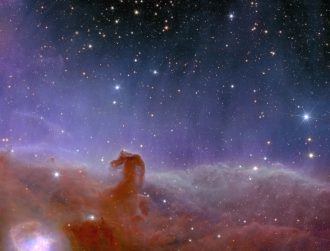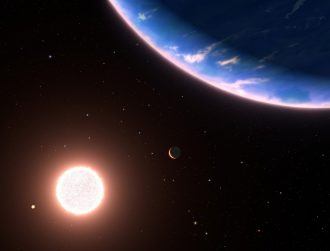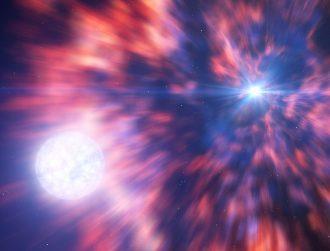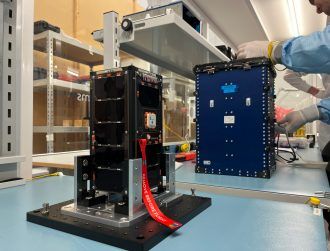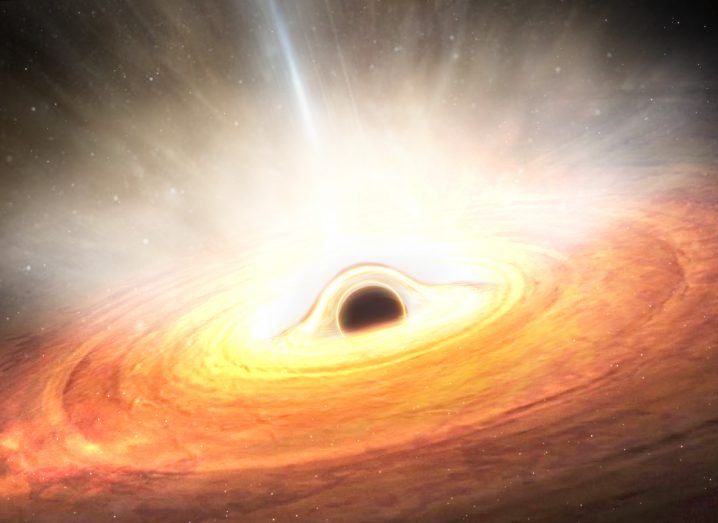
Black hole winds from a galactic core. Image: ESA/ATG (CC BY-SA 3.0 IGO DEED)
Comparing its action to ‘flipping over’ a dinner table, a team using ESA’s XMM-Newton have studied an unusual black hole in the centre of galaxy Markarian 817.
The European Space Agency has made a remarkable discovery in the centre of an otherwise unremarkable galaxy: incredibly energetic black hole “winds”.
Using XMM-Newton, an x-ray spectroscopy mission launched by the ESA at the turn of the century, an international team of astronomers were able to detect what they have described as ultra-fast black hole winds sourced from a galaxy called Markarian 817.
Black holes, some of the universe’s most mysterious objects found at the centre of large galaxies, are known to gobble up clouds of stardust surrounding them in a ring shape known as an accretion disk. This process is crucial for the formation of new stars.
However, most of that matter is spewed out by the black hole in a superfast jet of hot gas and dust. And sometimes, the ESA says, a black hole will “flip over the entire dinner table” by ejecting the material from all directions – clearing out surrounding gas.
According to the team making these observations in Markarian 817, not only does this occasional occurrence deprive the black hole of food, but it also means no new stars can form over a vast region, changing the structure of the galaxy.
“You might expect very fast winds if a fan was turned on to its highest setting,” said undergraduate researcher Miranda Zak of the University of Michigan, who played a central in the study.
“In the galaxy we studied, called Markarian 817, the fan was turned on at a lower power setting, but there were still incredibly energetic winds being generated.”
🕳️Black hole, or 👶 temperamental toddler?
😡@ESA_XMM caught a #BlackHole in the act of ‘flipping over the table’ during an otherwise civilised meal, changing its parent #galaxy forever
Read what happened 👉 https://t.co/im8ZPVcFTb pic.twitter.com/auJ44CK2tj— ESA Science (@esascience) February 1, 2024
Until now, ultra-fast black hole winds had only been detected from extremely bright accretion discs, but the new wind detected by XMM-Newton comes from a “distinctly average” galaxy which the ESA described as “only snacking”.
“It is very uncommon to observe ultra-fast winds, and even less common to detect winds that have enough energy to alter the character of their host galaxy,” explained co-author Dr Elias Kammoun, who is an astronomer at the Roma Tre University in Italy.
“The fact that Markarian 817 produced these winds for around a year, while not being in a particularly active state, suggests that black holes may reshape their host galaxies much more than previously thought.”
According to the ESA, a detailed analysis of the X-ray measurements from XMM-Newton showed that, far from sending out a single “puff” of gas, the centre of Markarian 817 produced a gusty storm over a wide area in the accretion disc.
This wind lasted for several hundred days and consisted of “at least” three distinct components, each moving at “several” percent of the speed of light.
“Many outstanding problems in the study of black holes are a matter of achieving detections through long observations that stretch over many hours to catch important events,” added Dr Norbert Schartel, ESA’s XMM-Newton project scientist.
“This highlights the prime importance of the XMM-Newton mission for the future. No other mission can deliver the combination of its high sensitivity and its ability to make long, uninterrupted observations.”
Find out how emerging tech trends are transforming tomorrow with our new podcast, Future Human: The Series. Listen now on Spotify, on Apple or wherever you get your podcasts.
Black hole winds from a galactic core. Image: ESA/ATG (CC BY-SA 3.0 IGO DEED)

